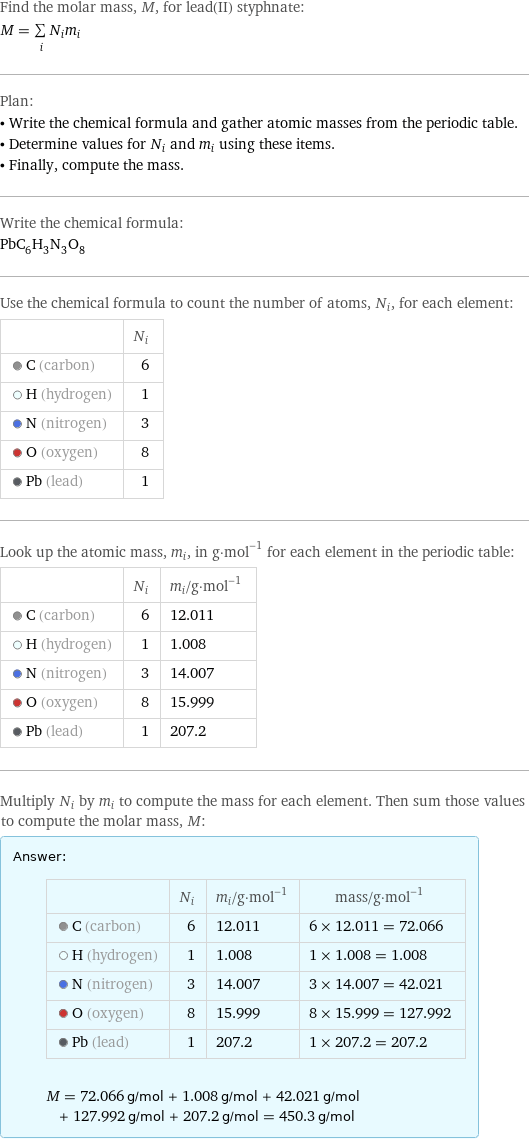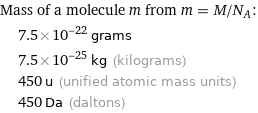Input interpretation

lead(II) styphnate | molar mass
Result

Find the molar mass, M, for lead(II) styphnate: M = sum _iN_im_i Plan: • Write the chemical formula and gather atomic masses from the periodic table. • Determine values for N_i and m_i using these items. • Finally, compute the mass. Write the chemical formula: PbC_6H_3N_3O_8 Use the chemical formula to count the number of atoms, N_i, for each element: | N_i C (carbon) | 6 H (hydrogen) | 1 N (nitrogen) | 3 O (oxygen) | 8 Pb (lead) | 1 Look up the atomic mass, m_i, in g·mol^(-1) for each element in the periodic table: | N_i | m_i/g·mol^(-1) C (carbon) | 6 | 12.011 H (hydrogen) | 1 | 1.008 N (nitrogen) | 3 | 14.007 O (oxygen) | 8 | 15.999 Pb (lead) | 1 | 207.2 Multiply N_i by m_i to compute the mass for each element. Then sum those values to compute the molar mass, M: Answer: | | | N_i | m_i/g·mol^(-1) | mass/g·mol^(-1) C (carbon) | 6 | 12.011 | 6 × 12.011 = 72.066 H (hydrogen) | 1 | 1.008 | 1 × 1.008 = 1.008 N (nitrogen) | 3 | 14.007 | 3 × 14.007 = 42.021 O (oxygen) | 8 | 15.999 | 8 × 15.999 = 127.992 Pb (lead) | 1 | 207.2 | 1 × 207.2 = 207.2 M = 72.066 g/mol + 1.008 g/mol + 42.021 g/mol + 127.992 g/mol + 207.2 g/mol = 450.3 g/mol
Unit conversion

0.4503 kg/mol (kilograms per mole)
Comparisons

≈ 0.62 × molar mass of fullerene ( ≈ 721 g/mol )

≈ 2.3 × molar mass of caffeine ( ≈ 194 g/mol )

≈ 7.7 × molar mass of sodium chloride ( ≈ 58 g/mol )
Corresponding quantities

Mass of a molecule m from m = M/N_A: | 7.5×10^-22 grams | 7.5×10^-25 kg (kilograms) | 450 u (unified atomic mass units) | 450 Da (daltons)

Relative molecular mass M_r from M_r = M_u/M: | 450